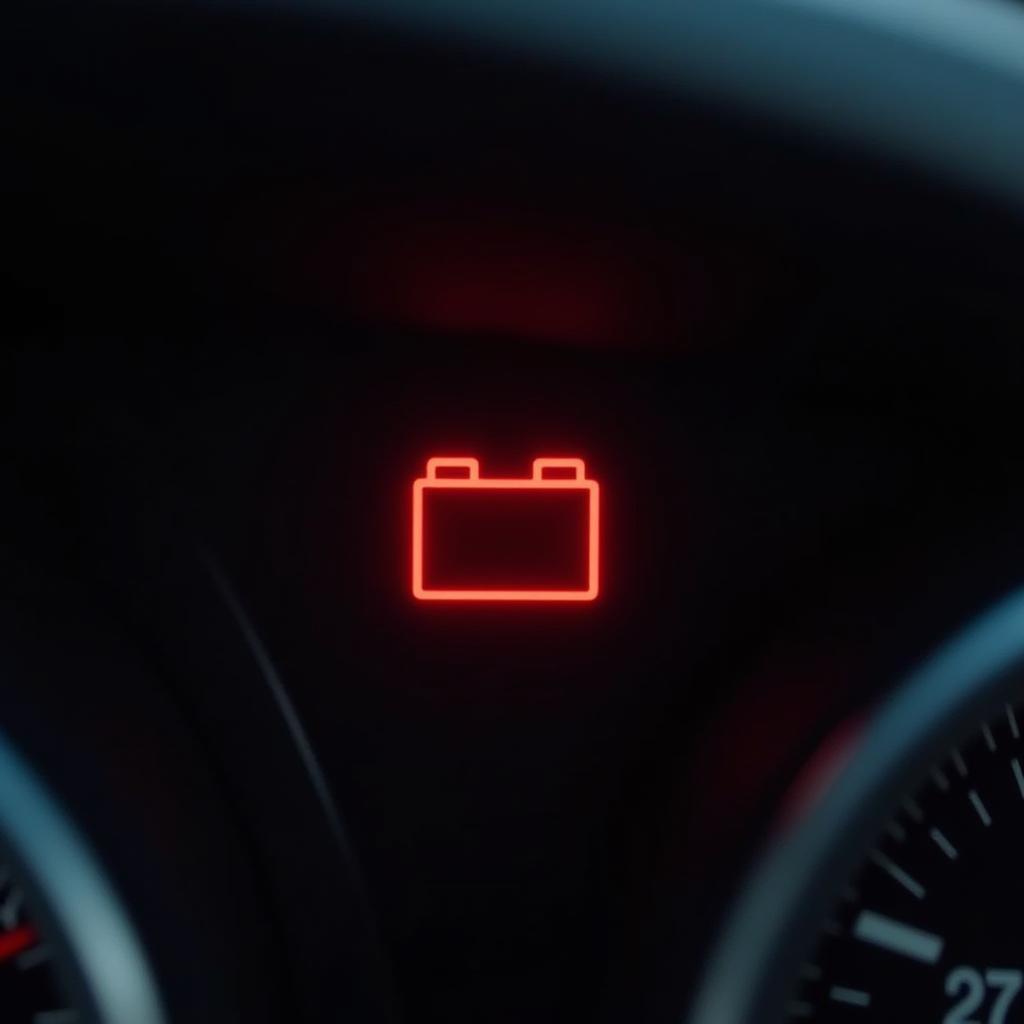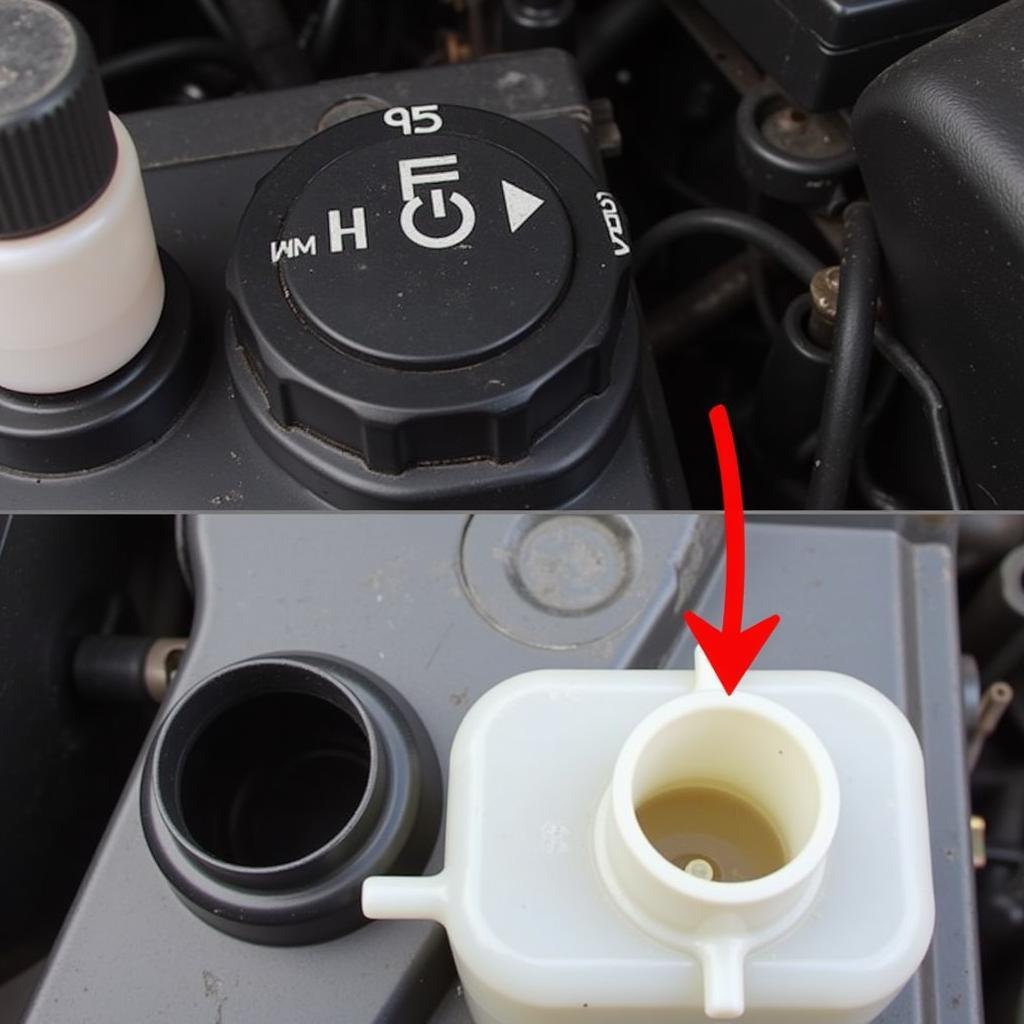The Ford Transit brake warning light is a crucial safety feature that alerts you to potential issues with your braking system. Ignoring this warning light can have serious consequences, putting you and other road users at risk. This comprehensive guide will delve into the common causes of the Ford Transit brake warning light, provide troubleshooting steps, and outline potential solutions.
Common Causes of the Ford Transit Brake Warning Light
Understanding why your Ford Transit brake warning light is on is the first step towards resolving the issue. Here are some of the most common culprits:
-
Worn Brake Pads: Brake pads are designed to wear down over time. When they reach a certain thickness, the brake pad wear sensor triggers the warning light, indicating it’s time for a replacement.
-
Low Brake Fluid Level: Your Ford Transit relies on hydraulic pressure to engage the brakes. If the brake fluid level is low, air can enter the system, compromising braking performance and illuminating the warning light.
-
Faulty Brake Light Switch: The brake light switch is responsible for activating your brake lights when you press the pedal. A malfunctioning switch can disrupt the signal, causing the brake warning light to come on.
-
ABS Sensor Problems: The Anti-lock Braking System (ABS) prevents wheel lockup during hard braking. If an ABS sensor malfunctions, it can trigger the brake warning light.
-
Master Cylinder Failure: The master cylinder is the heart of your braking system, responsible for distributing brake fluid to the wheels. A failing master cylinder can lead to a loss of hydraulic pressure, activating the warning light and significantly impacting braking ability.
Troubleshooting a Ford Transit Brake Warning Light
Before rushing to a mechanic, there are a few troubleshooting steps you can perform yourself:
-
Check the Brake Fluid Level: Locate the brake fluid reservoir under the hood. The reservoir will have a “Min” and “Max” marking. If the fluid level is below the “Min” mark, add the appropriate brake fluid.
-
Inspect the Brake Pads: If you’re comfortable with basic car maintenance, you can visually inspect the brake pads through the wheel spokes. Look for significant wear and tear. If the pads appear thin or worn, it’s best to have them replaced by a professional.
-
Check the Brake Lights: Have a friend or family member press the brake pedal while you stand behind the vehicle. Ensure all brake lights are functioning correctly. If not, it could indicate a faulty brake light switch.
When to Seek Professional Help
If the brake warning light remains illuminated after checking the brake fluid level and inspecting the brake pads, it’s crucial to seek professional help immediately. Continuing to drive with a potential brake issue can be extremely dangerous.
A qualified mechanic can diagnose the problem accurately using specialized tools and equipment. They can then recommend and perform the necessary repairs to restore your Ford Transit’s braking system to its optimal condition.
Ford Transit Brake Pad Warning Light Reset
In some cases, the brake pad warning light may remain on even after replacing the brake pads. This usually happens because the brake pad wear sensor needs to be reset. The reset procedure may vary slightly depending on the model year of your Ford Transit. You can find model-specific information, such as how to reset a Ford Transit 2012 brake pad warning light, in your owner’s manual or by searching online for reliable resources.
Preventing Future Brake Warning Light Issues
Regular maintenance is key to preventing future brake warning light issues with your Ford Transit:
-
Adhere to the Recommended Brake Fluid Flush Schedule: Consult your owner’s manual for the recommended brake fluid flush intervals. Fresh brake fluid helps maintain optimal braking performance and prevents corrosion within the system.
-
Inspect your Brakes Regularly: Make it a habit to visually inspect your brake pads and rotors during routine maintenance checks. Look for any signs of wear, damage, or leaks.
-
Address Warning Lights Promptly: Never ignore a dashboard warning light, especially one related to your brakes. Timely attention to these warnings can prevent minor issues from escalating into major repairs.
Conclusion
The Ford Transit brake warning light serves as a vital safety indicator, alerting you to potential problems within your braking system. Understanding the common causes, performing basic troubleshooting, and knowing when to seek professional help can save you time, money, and potentially prevent accidents. Regular maintenance and prompt attention to warning signs will help keep your Ford Transit’s braking system in optimal condition, ensuring safe and reliable driving for miles to come. If you suspect an issue with your brake pads, you can find more information at Ford Transit brake pads warning light. This resource provides a deeper dive into brake pad-specific warning lights. Additionally, you might find this article about the Ford Transit Custom brake warning light helpful if you own a custom model.



